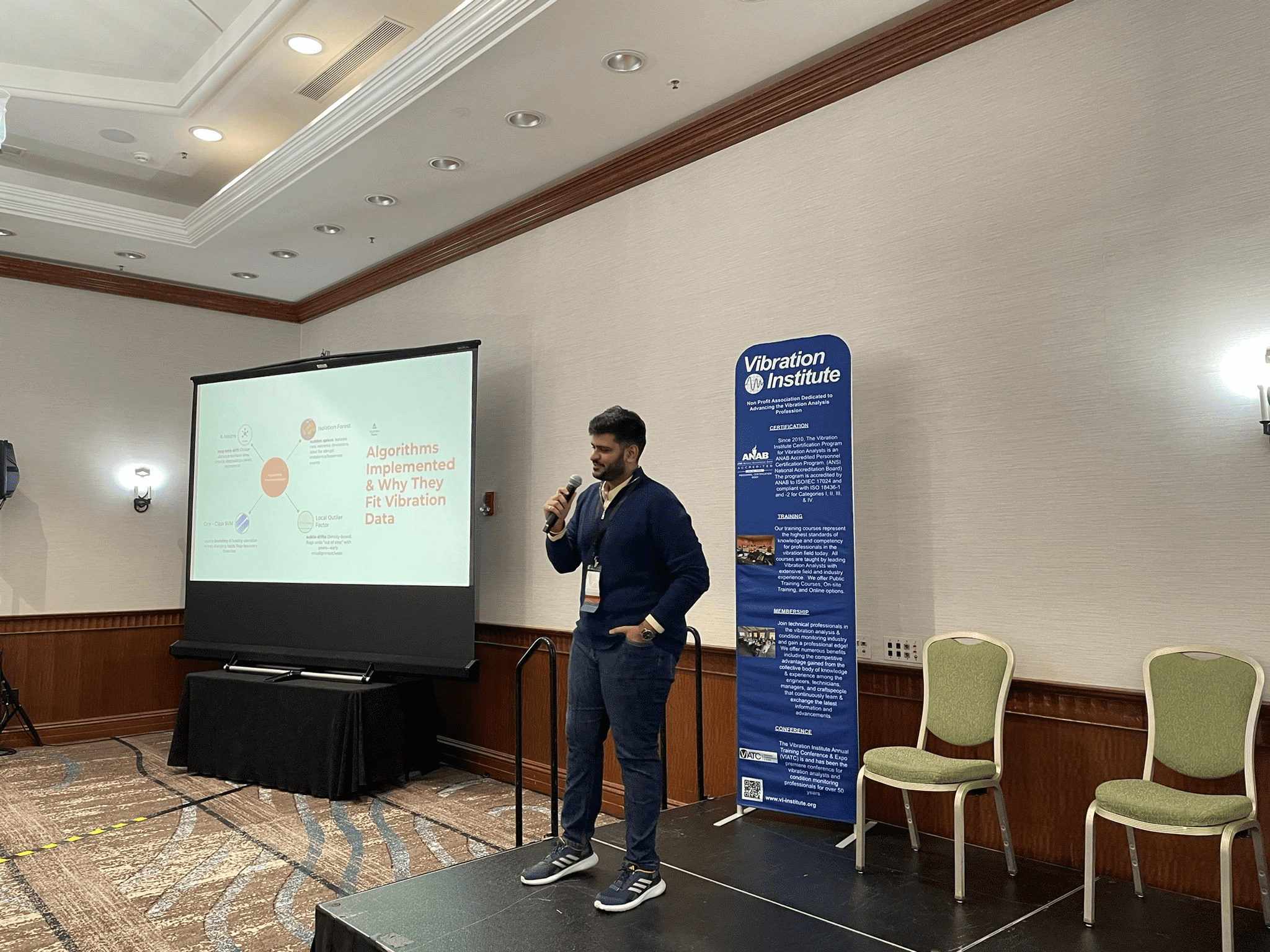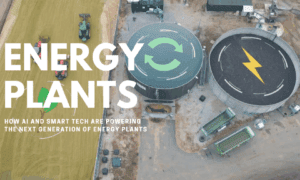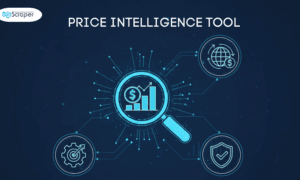This is an interview with Drumil Joshi, Monitoring & Diagnostics Analyst, Southern Power Company
Can you tell us about your background and how you became a leading Data Scientist and Monitoring & Diagnostics Analyst at Southern Power?
Absolutely. My journey has always been about blending innovation with real-world impact. I began with a Master’s in Data Science from Indiana University, and early on, I realized that my strength was not just in building algorithms but in translating complex insights into actionable strategies. At Southern Power, I’ve had the privilege of leading high-impact analytics projects that directly enhance renewable energy performance, from designing machine-learning pipelines that improve wind turbine safety to developing proprietary tools for Battery Energy Storage Systems (BESS). Alongside my industry work, I’ve authored a textbook, published multiple international research papers, and contributed patents, which gave me the ability to approach challenges with both academic rigor and practical execution. Over time, this combination of technical expertise, strategic thinking, and a passion for renewable energy reliability positioned me to become a trusted Monitoring & Diagnostics Analyst, where I now help drive the future of intelligent systems for Southern Power’s $450M renewable fleet.
What inspired you to develop VIBRIS, and how has your journey in the renewable energy sector shaped this innovation?
The inspiration for VIBRIS really came from witnessing firsthand the fragility and complexity of wind turbine reliability. In renewables, a small, undetected vibration anomaly, whether in a gearbox, bearing, or shaft, can escalate into catastrophic failure, costly downtime, and lost clean energy production. My journey at Southern Power, monitoring dozens of wind and solar assets, showed me that traditional condition monitoring wasn’t enough; we needed a system that was secure, intelligent, and proactive. That’s where VIBRIS was born. We combined rigorous cybersecurity, token-based authentication, and proprietary HEX encoding with advanced ensemble machine learning models to create a platform that not only detects anomalies but also distinguishes between short-term noise and true long-term degradation. For me, this innovation represents the intersection of my background in AI, my passion for sustainable technology, and my vision of how we can push the renewable sector forward with tools that are adaptive, predictive, and resilient.
Could you walk us through a specific challenge you faced while integrating AI, vibration analysis, and cybersecurity in VIBRIS, and how you overcame it?
One of the biggest challenges we faced with VIBRIS was integrating three distinct domains—AI, vibration analysis, and cybersecurity—into harmony. Vibration data itself is incredibly complex; it’s high-frequency, sensitive to environmental noise, and often inconsistent. At the same time, we couldn’t compromise on data security, since operational data from turbines is highly sensitive. The breakthrough came when we designed a multi-layered, hierarchical data acquisition process that used token-based authentication and proprietary HEX encoding to safeguard raw sensor output before it even reached the analysis stage. This ensured confidentiality and fidelity without slowing down real-time processing. On the AI side, we realized that no single algorithm could capture the full spectrum of anomalies, so we built an ensemble framework: Isolation Forest to catch abrupt deviations, LOF for subtle drifts, One-Class SVM for complex boundary detection, and K-Means to uncover long-term degradation patterns. The challenge was integration, but by layering security at the foundation and blending complementary machine learning models, we created a system that was not only robust and secure but also forward-looking. To me, that was more than solving a technical problem; it was proof that innovation in renewables requires thinking like a tech leader, uniting disciplines that usually sit apart.
How does VIBRIS’s token-based data authentication and proprietary HEX encoding address the unique cybersecurity concerns in SCADA-to-PI data streams for renewable energy?
That’s a crucial question, because in renewable energy, data security is just as important as data accuracy. SCADA-to-PI data streams carry the operational lifeblood of wind turbines, real-time vibration, speed, and health metrics. If compromised, not only does reliability suffer, but critical infrastructure risks exposure. With VIBRIS, we approached this challenge by embedding token-based, time-limited authentication right at the access layer, so every interaction with the system is verified without exposing static credentials. On top of that, we designed a proprietary HEX encoding process that converts raw sensor values and metadata into a non-human-readable format, essentially cloaking sensitive data while keeping it optimized for analysis. This dual-layer approach means data is protected end-to-end; even if intercepted, it remains meaningless without our proprietary decoding. What makes this powerful is that we didn’t treat cybersecurity as an afterthought; we built it into the DNA of condition monitoring. In my view, this is how the future of renewables should be: engineered systems that are not only intelligent but inherently secure, ensuring that the transition to clean energy is also a transition to resilient, future-proof infrastructure.
Can you share an example of how the ensemble machine learning models in VIBRIS have successfully distinguished between short-term variability and long-term degradation in a wind turbine?
One of the most compelling demonstrations came when we analyzed vibration data across multiple turbines, specifically looking at anomalies in the high-speed shaft and generator end bearings. Using our ensemble of models, Isolation Forest flagged abrupt spikes that were linked to transient mechanical stresses—the kind of short-lived anomalies you don’t want to overreact to. At the same time, the Local Outlier Factor (LOF) began detecting subtle density shifts in the data that hinted at early-stage misalignment. Meanwhile, One-Class SVM drew the boundary of normal operation and revealed that, during otherwise stable rotor speeds, certain vibration signatures were creeping outside the safe envelope, an early warning of wear. Finally, K-Means clustering showed a gradual drift of some turbines away from their stable operating clusters, uncovering long-term degradation trends. When we combined these results into a composite anomaly score, we could clearly separate noise from real, persistent issues. In practice, this meant we avoided unnecessary interventions for transient anomalies while catching a turbine with a persistent deviation before it escalated into costly downtime. For me, this was proof that VIBRIS doesn’t just analyze data; it thinks like a reliability engineer, ensuring operators act on the right signals at the right time.
What unexpected insights or benefits have you discovered while implementing VIBRIS across wind, solar, and BESS systems?
One of the most unexpected insights from implementing VIBRIS was realizing how universally valuable secure, intelligent anomaly detection is across different asset classes. Initially, VIBRIS was designed for wind turbines, where vibration is the primary indicator of mechanical health. But as we extended the framework, we found that the same principles that secure hierarchical data retrieval, proprietary encoding, and ensemble anomaly detection could be adapted for solar inverters and Battery Energy Storage Systems (BESS). For solar, the benefit came in identifying inverter flatlines and subtle output drifts that traditional monitoring often overlooked. In BESS, the ensemble framework picked up oscillation patterns that pointed to stability issues long before they would have triggered alarms. Another pleasant surprise was how much trust and confidence VIBRIS gave to operations teams: by safeguarding SCADA-to-PI data streams with token-based authentication and HEX encoding, operators felt assured that both the integrity and confidentiality of their data were protected. The real benefit wasn’t just anomaly detection; it was building a culture of proactive, data-driven reliability that scales across wind, solar, and storage. That’s when I knew VIBRIS wasn’t just a monitoring tool; it was becoming a blueprint for intelligent, secure infrastructure in the renewable sector.
How do you envision VIBRIS evolving to meet the future challenges of intelligent condition monitoring in renewable energy?
I see VIBRIS evolving into a fully adaptive, autonomous reliability agent that doesn’t just monitor assets but actively learns and optimizes in real time. Today, we’ve shown how secure data pipelines and ensemble machine learning can separate transient noise from true degradation, but the future lies in making the system self-adjusting. Imagine anomaly thresholds that dynamically shift based on weather conditions, load variations, or even peer-to-peer turbine comparisons, all without human intervention. I also see VIBRIS expanding its footprint beyond wind to become a unified monitoring layer for solar, BESS, and even hybrid plants, integrating multiple data streams into a single, intelligent reliability score. From a cybersecurity standpoint, the next step is embedding zero-trust architecture and real-time token rotation so every interaction remains airtight. Ultimately, the goal is for operators to move from reactive firefighting to a world where intelligent condition monitoring becomes invisible, always on, always learning, and always protecting performance. In that vision, VIBRIS isn’t just a system; it’s part of the DNA of resilient renewable infrastructure, driving efficiency, trust, and long-term sustainability.
As we move towards democratizing predictive maintenance, what advice would you give to aspiring data scientists and engineers looking to make an impact in the renewable energy sector?
My advice is simple but profound: focus on building solutions that are both technically excellent and operationally meaningful. In renewable energy, the stakes are high; downtime isn’t just a technical issue, it’s lost clean power for communities and increased costs for operators. Aspiring data scientists and engineers should start by grounding themselves in the fundamentals of energy systems, understanding how a turbine vibrates, how a solar inverter behaves, or how a BESS stabilizes. From there, learn to weave in data science, AI, and cybersecurity not as separate layers, but as integrated parts of the same solution. That’s exactly what we did with VIBRIS: we didn’t just build anomaly models, we secured data pipelines, normalized SCADA-to-PI streams, and created ensemble frameworks that made sense for the real world. Finally, I’d say don’t be afraid to innovate boldly. The renewable sector is ready for disruption, and the future will belong to those who can democratize predictive maintenance, turning complex intelligence into tools that empower everyone from operators in the control room to executives in the boardroom. If you approach this space with curiosity, discipline, and a vision for impact, you can truly help shape the energy systems of tomorrow.



































